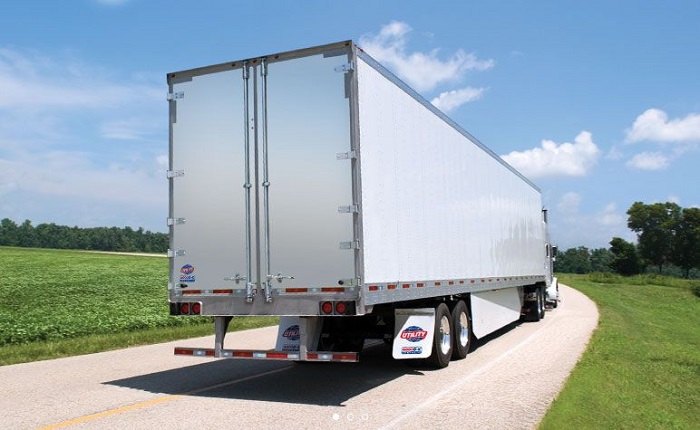In today’s fast-paced logistics landscape, mastering energy-efficient driving is essential for dry-van operations navigating urban routes like those in Louisville. With rising fuel costs and environmental concerns, adopting eco-drive habits not only lowers expenses but also boosts your urban MPG significantly. Key strategies such as predictive cruise control, timely idle shutdown, and proper tire inflation contribute to maximizing fuel saving dry-van performance. Additionally, utilizing aerodynamic enhancements like aero skirts and leveraging telematics scores and mpg reports offers actionable insights to fine-tune driving behaviors. Embracing these energy-efficient practices ensures that fleets operate smarter, reducing environmental impact while improving profitability on demanding city routes. This article explores practical tips and technologies that help dry-van drivers excel in urban settings, paving the way for greener, cost-effective transportation.
2. Speed Management Techniques for Optimal Urban MPG
Managing speed effectively is crucial for improving urban MPG on Louisville routes. Here are proven speed management techniques that enhance fuel saving dry-van performance:
- Maintain steady speeds: Avoid rapid accelerations and hard braking to reduce fuel wastage. Predictive cruise control systems help keep a consistent pace on stop-and-go urban roads.
- Adhere to speed limits: Driving at or slightly below speed limits optimizes fuel combustion, minimizing unnecessary fuel consumption in city traffic patterns.
- Anticipate traffic flow: Use telematics score and real-time mpg reports to identify congestion trends, enabling smoother speed adjustments that prevent frequent stops.
- Utilize idle shutdown: When stationary for extended periods, idle shutdown technology prevents fuel drain, preserving engine efficiency.
- Optimize tire inflation: Properly inflated tires reduce rolling resistance, improving speed control and overall urban MPG.
- Incorporate aerodynamic aids: Aero skirts and other enhancements stabilize airflow at moderate speeds, complementing efficient speed management.
Implementing these techniques fosters eco-drive habits, maximizing fuel efficiency on busy dry-van urban routes.
3. Benefits of Idle Cut and Idle Shutdown Practices
Implementing idle cut and idle shutdown practices delivers significant advantages for fuel saving dry-van operations on Louisville routes:
- Reduced fuel consumption: Shutting down the engine during extended stops eliminates needless fuel burn, directly boosting urban MPG and lowering overall fuel expenses.
- Lower emissions: Minimizing idle times cuts harmful exhaust emissions, supporting greener urban air quality and aligning with eco-drive sustainability goals.
- Enhanced engine longevity: Idle shutdown reduces engine wear and overheating risks, leading to fewer maintenance issues and longer vehicle lifespan.
- Improved telematics scores: Consistent use of idle cut features positively impacts driver behavior metrics and mpg reports, helping fleet managers optimize performance.
- Cost savings: Fuel savings combined with reduced maintenance costs translate into substantial operational savings over time.
- Compliance with regulations: Many urban areas encourage or mandate idle reduction, making these practices essential for regulatory adherence and avoiding fines.
By integrating idle cut and idle shutdown, dry-van drivers enhance efficiency, promote sustainability, and maintain competitive edge on demanding city routes.
4. Utilizing Predictive Cruise Control on Louisville Routes
Leveraging predictive cruise control is a game-changer for energy-efficient driving on Louisville routes. Key benefits and practices include:
- Anticipate road conditions: Predictive cruise uses GPS and topographic data to adjust speed before hills and curves, optimizing fuel saving dry-van performance.
- Maintain steady urban MPG: Smooth acceleration and deceleration reduce fuel waste common in stop-and-go city traffic.
- Integrate with telematics scores: Real-time feedback from mpg reports helps drivers fine-tune cruise settings for maximum efficiency.
- Complement idle shutdown: Predictive cruise minimizes unnecessary idling by adapting speed to traffic flow, enhancing engine efficiency.
- Support tire inflation and aero skirts: Stable speeds improve the effectiveness of proper tire pressure and aerodynamic aids, amplifying fuel economy gains.
- Boost driver confidence: Automated speed adjustments reduce fatigue and encourage consistent eco-drive habits across Louisville’s dynamic urban routes.
Adopting predictive cruise control delivers smarter, greener dry-van operations with measurable fuel and cost savings.
Table
5. Additional Fuel-saving Measures: Tire Inflation and Aero Skirts
Beyond driving techniques, simple mechanical adjustments like proper tire inflation and aerodynamic enhancements such as aero skirts play a vital role in boosting urban MPG on Louisville routes. Maintaining optimal tire pressure reduces rolling resistance, ensuring smoother, more efficient motion. This not only improves fuel saving dry-van performance but also enhances vehicle safety and tire longevity. Regularly checking tire inflation aligns perfectly with eco-drive habits promoted by telematics score feedback and mpg reports.
Aero skirts, designed to streamline airflow around the trailer’s undercarriage, minimize drag during city driving at moderate speeds. When paired with predictive cruise control and idle shutdown strategies, these skirts help sustain fuel efficiency gains by reducing engine load. For dry-van operators navigating stop-and-go urban traffic, investing in aero skirts delivers measurable reductions in fuel consumption and emissions. Combined, optimized tire inflation and aero skirts form an effective, low-maintenance duo that continually supports greener, cost-effective dry-van operations on demanding Louisville routes.
6. Leveraging Telematics Scores and MPG Reports for Continuous Improvement
Harnessing telematics scores and mpg reports is vital for sustaining energy-efficient driving on Louisville routes. These tools provide detailed insights into driver behavior, speed patterns, idle shutdown usage, tire inflation status, and effectiveness of aero skirts. By regularly reviewing telematics data, fleet managers can identify areas where fuel saving dry-van performance dips and implement targeted coaching or adjustments. Drivers gain real-time feedback, promoting eco-drive habits that steadily improve urban MPG. Integrating predictive cruise control insights with telematics reports further refines speed management strategies. Ultimately, leveraging this data-driven approach fosters continuous improvement, ensuring dry-van operations remain fuel-efficient, cost-effective, and environmentally responsible on dynamic urban routes.
7. Conclusion: Implementing Eco-Drive Habits to Enhance Fuel Saving Dry-Van Performance
In urban dry-van operations, adopting energy-efficient driving habits is essential for maximizing fuel savings and reducing environmental impact. Throughout this guide, we explored key strategies such as smooth acceleration and braking, maintaining optimal speeds, and minimizing idle time, all tailored to stop-and-go city traffic. Proper vehicle maintenance and tire care further boost fuel efficiency, while route optimization and load management ensure smarter, greener journeys. By integrating these eco-drive habits, fleets can significantly cut fuel costs, lower emissions, and improve overall operational performance. Embracing sustainable driving not only benefits the environment but also enhances your bottom line — making it a win-win for drivers, fleet managers, and communities alike. Start implementing these proven techniques today to transform urban dry-van logistics into a more efficient, eco-friendly future.
Call to Action
Drive smarter, save fuel, and boost your bottom line—click now to discover must-know energy-efficient driving habits for dry-van operations in urban areas! Have questions?Sign up today and start transforming your fleet’s performance!











